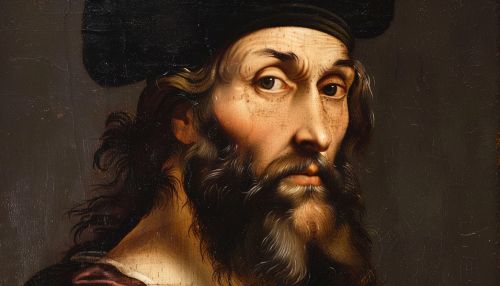Raphael
Early Life and Education
Raphael, full name Raffaello Sanzio da Urbino, was born on April 6, 1483, in the small but artistically significant central Italian city of Urbino. He was the son of Giovanni Santi, a painter at the court of Federico da Montefeltro, Duke of Urbino, and his wife, Magia di Battista Ciarla. His father recognized his son's unique talent at an early age and provided him with his first artistic training.
Artistic Training
After the death of his father in 1494, Raphael continued his training under the guidance of Pietro Perugino, a leading painter of the Umbrian School. Here, he learned the clarity of form, orderly composition, and decorative beauty that characterized the Umbrian style. Raphael's early work, such as "The Crucifixion" (1503), shows the influence of Perugino's style.
Move to Florence
In 1504, Raphael moved to Florence, which was then considered the artistic capital of Italy. Here, he was exposed to the works of the city's leading artists of the time, including Leonardo da Vinci and Michelangelo. Raphael's style underwent a significant transformation during his Florentine period, as he incorporated elements of the city's innovative artistic trends into his own work.
Work in Rome
In 1508, Raphael was summoned to Rome by Pope Julius II and commissioned to execute frescoes in four small rooms of the Vatican Palace. These rooms, known as the Stanze di Raffaello, are considered his greatest work. The frescoes, including "The School of Athens" and "The Disputation of the Holy Sacrament," showcase Raphael's ability to convey complex theological and philosophical ideas through his art.
Architectural Work
In addition to his painting, Raphael was also an accomplished architect. After the death of Donato Bramante in 1514, Raphael was appointed as the chief architect of the new St. Peter's Basilica. His architectural work, however, is often overshadowed by his painting.
Death and Legacy
Raphael died unexpectedly on April 6, 1520, his 37th birthday. Despite his relatively short life, he left behind a substantial body of work that has had a profound influence on Western art. His harmonious compositions, graceful figures, and clarity of form have made him one of the most admired artists of the Renaissance.


